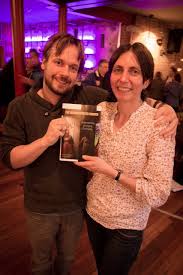 I have always been suspicious of the concept of an Emerging Church Movement (ECM)—it always feels pretentious in a very unpretentious way—how ironic! So going into reading Marti and Ganiel’s The Deconstructed Church, I took a skeptical lens. And while I found myself questioning the long-term strength of the movement, I am convinced that Marti and Ganiel are on to something. And even if the movement may not last, it puts an interesting focus on the overall strength and condition of global evangelicalism, at least post-evangelicals in America and the United Kingdom. Something is afoot among these post-modern religious entrepreneurs, trying to deconstruct their evangelical tradition without falling into Protestant liberalism, which they equally reject. It is quite an interesting group of “religious individualists” who at the same time are deeply committed to a “cooperative egoism” that both adapts and adopts the creativity of the artist but tries to avoid the arid autonomy of the modernist dilemma. They hope to maintain an egalitarian community where certainty is not sought and hierarchy is avoided at all costs.
I have always been suspicious of the concept of an Emerging Church Movement (ECM)—it always feels pretentious in a very unpretentious way—how ironic! So going into reading Marti and Ganiel’s The Deconstructed Church, I took a skeptical lens. And while I found myself questioning the long-term strength of the movement, I am convinced that Marti and Ganiel are on to something. And even if the movement may not last, it puts an interesting focus on the overall strength and condition of global evangelicalism, at least post-evangelicals in America and the United Kingdom. Something is afoot among these post-modern religious entrepreneurs, trying to deconstruct their evangelical tradition without falling into Protestant liberalism, which they equally reject. It is quite an interesting group of “religious individualists” who at the same time are deeply committed to a “cooperative egoism” that both adapts and adopts the creativity of the artist but tries to avoid the arid autonomy of the modernist dilemma. They hope to maintain an egalitarian community where certainty is not sought and hierarchy is avoided at all costs.
The authors look at the ECM in terms of pubs, conferences, web based networks and the neo-monastic movement. Peter Rollins, a Belfast Protestant entrepreneur, becomes the symbol and teller of the ECM story even as he denies being a movement leader. Ganiel, who followed Rollins most closely, understands him very well and has done the primary work on the Ikon movement. In many ways Rollins is the most interesting figure in the entire movement,  the most intellectually complex and the most charismatic of these ECM entrepreneurs.
the most intellectually complex and the most charismatic of these ECM entrepreneurs.
The book looks at the movement as a pluralist congregational enterprise that is not so much nondenominational but an a-denominational, point and shoot church, that moves from bar to stage, and only occasionally occupies sanctuaries, making the profane sacred, and attempting to obliterate the old ways of dichotomizing what is holy from what is not. The churches, as the author’s say, are for “recovering Christians,” that embrace the secular and want to avoid the smell of megachurch manipulation.
Brian McLaren, at least for many, is A New Kind of Christian (McLaren’s most popular book), and so be it, but one wonders if there is really anything new in Christianity? Of course, as the Marti and Ganiel observe, this is a post-modern moment that is trying to skate on the fractured ice of our multiple cultures and religions, which is the challenge of this new kind of Christianity. It has to be deconstructed at every conference, in order to stay relevant. Faith, as the authors’ make clear, is a conversation, (when was it not?) but this turn to aesthetics and dialogue makes for an intriguing and tantalizing picture of what it means to be a Christian in the 21st century.
It is not easy to establish a final picture of what this movement is or could be. Marti and Ganiel are smart in not claiming too much. Piety and practices of the faith are deconstructed and reconfigured and the whole point is to move beyond a creedal faith that becomes a rote affair and loses its dynamism. The fundamentalism of many of these believers’ past is far in the rearview mirror and Jesus is the one leading them into the real world un-sanitized and incarnated in neo-monastic traditions. Monastic traditions, by the way, which neither demand celibacy nor poverty, but are adopted when found convenient or when they feel “right”.
One can be a bit cynical about how these ECM figures poach and pick what they find compelling, living mostly by their wits and abilities to sell their wares on the social networks, but they are trying to be religious individualists in community and this is neither easy nor convenient. I find it admirable at certain levels, though its sustainability seems doubtful. A continual revolution in piety and practice is romantic but tends to undercut institutions, but that’s the point of this book, and Marti and Ganiel don’t avoid that truth:
“Religious individualization indicates how individuals develop religious identities from a range of sources negotiating the imperatives of various religious institutions and taking ownership of their own convictions, however uncertain, ambiguous and simply antireligious those convictions may be.”
At the end of the book, the authors’ do a nice job of setting ECMers in context: they are not evangelicals (at least evangelicals have said so); they are not consumers, even as they try to sale their wares like any good entrepreneur—though no one seems to be getting rich in this group! Marti and Ganiel respond to the claim that ECM’s are already in a death spiral, and I think they make the case that the movement has legs, of course, time will tell. Most of all they are clear that these religious individualists have faced the truth that in our post modern times, there is no choice, that in these times of uncertainty, the religious task is to do bricolage, not for the sake of a denomination or a system of believing, but for the sake of individuals trying to maintain a relation to a world soaked in the diversity of faith systems and constantly facing the shock of diverse perspectives, all the while without lapsing into a kind of boring relativism. In this sense, as a midterm report on a movement, I found it fascinating and stimulating for my own thinking.











